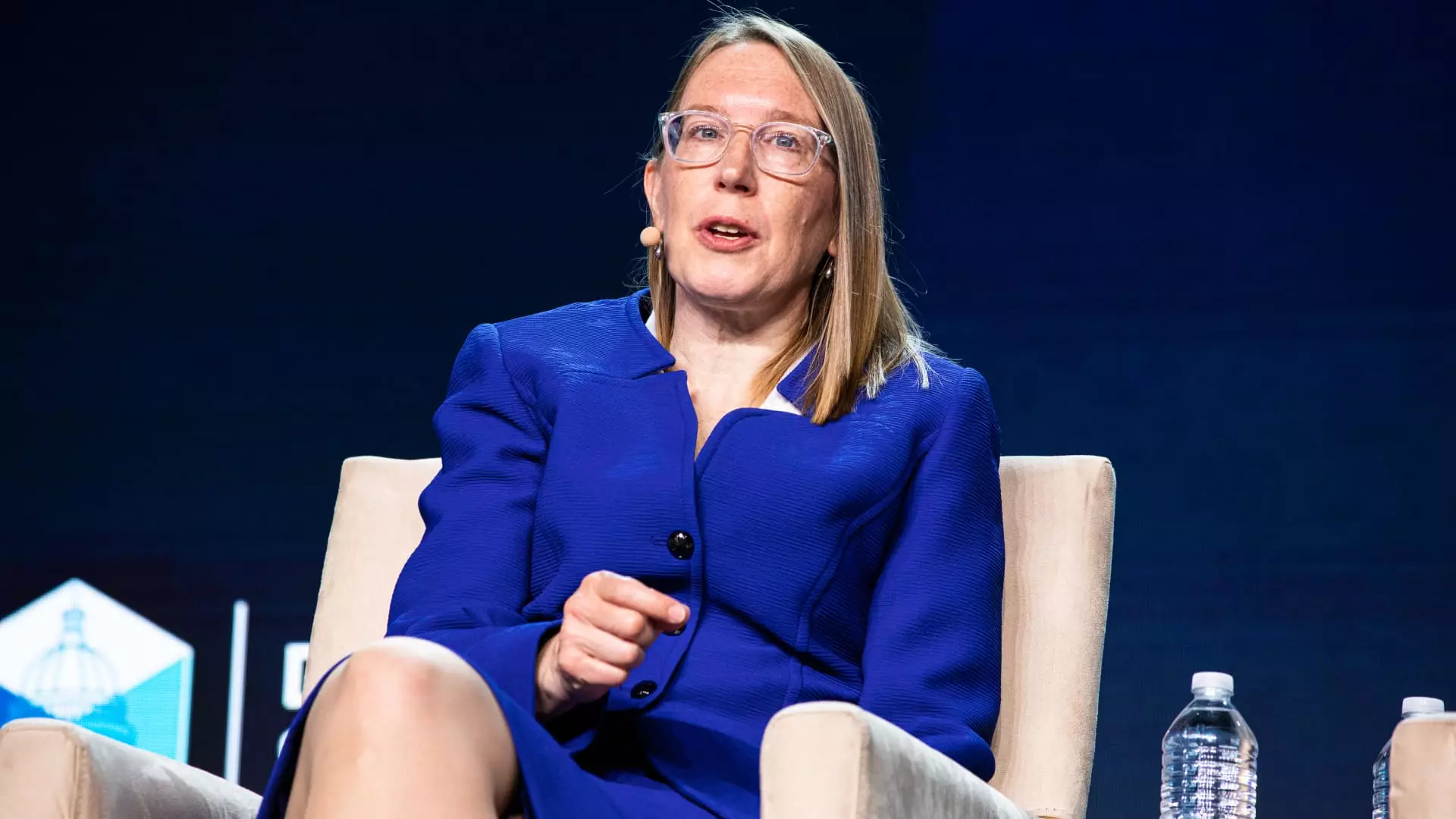The recent efforts by the Securities and Exchange Commission (SEC) to distance itself from the regulation of meme coins mark a profound shift in the landscape of cryptocurrency. Hester Peirce, a seasoned SEC commissioner, has indicated that the agency has essentially walked away from meme coins, stating that most do not meet the criteria to be considered securities under U.S. law. This decision has left investors to navigate a turbulent sea of speculation without the safety net of SEC oversight.
The SEC’s decision, which came on the heels of the launch of Donald Trump’s meme coin, $TRUMP, raises questions about the ramifications of such deregulation. Is it wise to allow the market to function unregulated, especially when it potentially operates on the whims of social media influencers? With no clear guidance from the agency, investors are encouraged to assume all the risks. Peirce remarked that clarifying protection boundaries for investors would have been prudent—a sentiment that echoes the broader concerns about investor security in an environment rife with volatility and wild price swings.
The Implications of Political Involvement
One aspect that complicates this situation is the interplay between politics and cryptocurrency. The fact that $TRUMP, which is significantly controlled by the Trump Organization, skyrocketed in market cap only to plummet shortly afterward brings to light the dubious legitimacy of projects tied to influential political figures. The politicization of cryptocurrency, particularly with high-profile figures like Trump involved, begs scrutiny regarding conflicts of interest. Can we trust investments that intertwine politics and finance, especially when they seem more like speculative gambles than sound financial opportunities?
Many Democratic lawmakers, such as Senator Richard Blumenthal, are vocal about their concerns that the Trump family’s involvement in crypto may open channels for foreign and corporate interests to gain undue influence. It is a slippery slope; what happens when personal gain supersedes regulatory oversight? We may see a new era of financial interests morphing into political leverage, raising alarming questions and ethical dilemmas.
The $TRUMP Token Phenomenon
Despite its volatility, the $TRUMP token has attracted attention and capital, demonstrating the sheer power of social media and public influence. Initially launched with grand proclamations about “winning,” it drew in a wave of speculative investment that inflated its market cap to $15 billion—a staggering figure for a token lacking intrinsic value. Investments in such assets could easily be characterized as whimsical rather than rational, illustrating how the crypto market often resembles a casino more than a regulated marketplace.
The troubling aspect is not just the inherent risk for investors but the underlying principle of value creation in the meme coin sector. Unlike conventional stocks, which are tied to earnings and company performance, meme coins often hinge upon the hype and visibility of their backing personalities. As the $TRUMP token saw a steep decline, it left many investors nursing losses while the creators continued to profit from transaction fees. The disconnect between creator profit and investor loss epitomizes the perilous heart of speculative investments.
The Future of Crypto Regulation
In light of the SEC’s recent actions, including the complete withdrawal of its lawsuit against Binance, the future trajectory of cryptocurrency regulation seems increasingly uncertain. Peirce’s dismissal of allegations that the agency’s actions are politically charged and her emphasis on establishing clear guidelines reflect a desperate need for an organized regulatory framework. However, her acknowledgment that a lack of rules paved the way for regulatory adjustments hints at the chaotic nature of oversight in this domain.
The focus on establishing rules rather than implementing them immediately could pave the way for a more supportive environment for players in the crypto space. But until then, the regulatory gray area offers both opportunities and risks for investors—a paradox that is bound to create more bubbles, bursts, and chaotic trading experiences. The movement away from stringent oversight might attract new capital but at what cost? If investors are left to fend for themselves, the potential for high-profile scandals and collapses is considerable.
The Role of Traditional Finance
A striking consequence of this deregulation is the exclusion of traditional financial institutions from engaging in crypto custody services. Peirce’s remarks about the now-rescinded Staff Accounting Bulletin 121 illustrate the need for sensible integration of traditional finance into the evolving crypto landscape. By effectively barring established financial entities from participating, this directive risked stifling innovation and security in the custody arena.
In a world increasingly driven by digital assets, fostering collaboration between traditional finance and cryptocurrency could yield a more stable, secure environment for investors. Regulations tailored to create space for experienced custodians could enhance investor confidence and legitimacy in the market. It is this synergy that could pave the way for crypto’s future—one where prudent oversight, rather than blanket deregulation, empowers sustainable growth.

